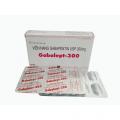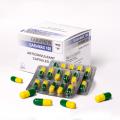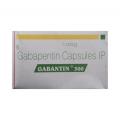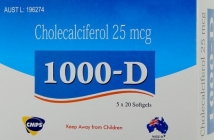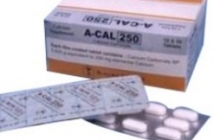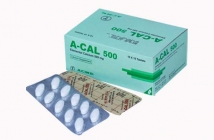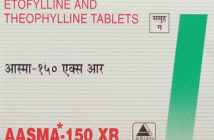Home / Categories / GABARON-300MG
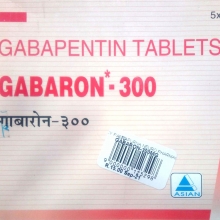
GABARON-300MG
(20X10)
GABAPENTIN-300MG
GABA ANALOGUE
ASIAN PHARMACEUTICALS-SOLAR-DIVISION
Product Details
GABAPENTIN
Class: Anticonvulsant
 Action Mechanism unknown; gabapentin-binding sites have been found in neocortex and hippocampus areas of the brain.
Action Mechanism unknown; gabapentin-binding sites have been found in neocortex and hippocampus areas of the brain.
 Indications Adjunctive therapy in treatment of partial seizures with or without secondary generalization in patients above 12 yr with epilepsy; adjunctive therapy for partial seizures in children 3 to 12 yr; management of postherpetic neuralgia in adults.
Indications Adjunctive therapy in treatment of partial seizures with or without secondary generalization in patients above 12 yr with epilepsy; adjunctive therapy for partial seizures in children 3 to 12 yr; management of postherpetic neuralgia in adults.
 Contraindications Standard considerations.
Contraindications Standard considerations.
 Route/Dosage
Route/Dosage
Epilepsy
ADULTS AND CHILDREN ABOVE 12 YR: PO 900 to 1800 mg/day in divided doses tid. Initial dose: 300 mg on day 1 and titrate upward rapidly. To minimize CNS side effects, administer initial dose on day 1 at bedtime. CHILDREN 3 TO 12 YR: PO Initiate therapy at 10 to 15 mg/kg/day in divided doses (ie, 3 times/day) and titrate dose upward over a period of about 3 days to the effective dose. CHILDREN AT LEAST 5 YR: PO The effective dose is 25 to 35 mg/kg/day in divided doses (ie, 3 times/day). CHILDREN 3 TO 4 YR: PO The effective dose is 40 mg/kg/day in divided doses (ie, 3 times/day).
Postherpetic Neuralgia
ADULTS: PO Start with a single 300 mg dose on day 1, 600 mg on day 2 (divided twice daily), and 900 mg on day 3 (divided 3 times daily). Subsequently, titrate the dose upward as needed for pain relief to a daily dose of 1800 mg (divided 3 times daily).
 Interactions
Interactions
Antacids: May reduce bioavailability of gabapentin. Cimetidine: Reduces renal clearance of gabapentin.
 Lab Test Interferences False-positive readings for Ames N-Multistix SG dipstick test when gabapentin is added to other antiepileptic drugs. Sulfosalicylic acid precipitation procedure is recommended instead.
Lab Test Interferences False-positive readings for Ames N-Multistix SG dipstick test when gabapentin is added to other antiepileptic drugs. Sulfosalicylic acid precipitation procedure is recommended instead.
 Adverse Reactions
Adverse Reactions
CV: Hypertension. CNS: Somnolence; dizziness; ataxia; tremor; nervousness; dysarthria; amnesia; depression; abnormal thinking; twitching; abnormal coordination; vertigo; hyperkinesia; parasthesia; reflex abnormality; hostility; anxiety. DERM: Pruritus; abrasion; purpura. EENT: Diplopia; amblyopia; nystagmus; abnormal vision; gingivitis. GI: Dyspepsia; dry mouth or throat; constipation; dental abnormalities; increased appetite; anorexia; flatulence. RESP: Rhinitis; pharyngitis; coughing; pneumonia. OTHER: Fatigue; weight increase; back pain; peripheral edema; impotence; leukopenia; vasodilation; asthenia; malaise; facial edema; arthralgia.
 Precautions
Precautions
Pregnancy: Category C. Lactation: Secreted in breast milk. Children: Safety and efficacy in children below 3 yr not established; safety and efficacy in management of postherpetic neuralgia in pediatric patients not established. Elderly and debilitated patients: Because of age-related renal impairment, dosage adjustment may be required. Carcinogenesis: May have carcinogenic potential. Renal impairment: Dose reduction recommended. Serious adverse effects: During clinical trials, some patients experienced status epilepticus, and 8 sudden, unexplained deaths occurred. The association of these events with gabapentin use is unclear. Withdrawal: Do not discontinue antiepileptic drugs abruptly because of possible increased seizure frequency from drug withdrawal.
PATIENT CARE CONSIDERATIONS
 Administration/Storage
Administration/Storage
- Administer medication with or without food and at least 2 hr after antacid administration.
- Administer initial dose on day 1 at bedtime to minimize CNS side effects.
- Titrate to effective dose given tid up to 1800 mg/day; maximum time between doses in tid schedule should not exceed 12 hr.
- Discontinue medication gradually over minimum of 1 wk.
- Store medication in tightly sealed container.
 Assessment/Interventions
Assessment/Interventions
- Obtain patient history, including drug history and any known allergies. Note compromised renal and cardiovascular function and seizure pattern.
- Assess baseline vital signs.
- Evaluate for reduced renal clearance when administered concurrently with cimetidine.
- Withdraw medication gradually to avoid the possibility of increasing seizure frequency.
OVERDOSAGE: SIGNS & SYMPTOMS Ataxia, labored breathing, ptosis, sedation, hypoactivity or excitation, double vision, slurred speech, drowsiness, lethargy, diarrhea
 Patient/Family Education
Patient/Family Education
- Instruct patient to take medication at least 2 hr after taking antacid.
- Explain that missed dose should be taken as soon as remembered but that 2 doses should not be taken together. Instruct patient to call health care provider if at least 2 doses are missed.
- Instruct patient to report the following symptoms to health care provider: excessive fatigue or weakness, dizziness, somnolence, incoordination, tremor or other symptoms of CNS depression, change in normal behavior, weight gain, back pain, alterations in GI system, alteration in skin or mucous membranes, fluid retention, general body discomfort, anorexia, visual disturbances, impotence.
- Advise patient that drug may cause drowsiness and to use caution while driving or performing other tasks requiring mental alertness.
Books@Ovid
Copyright © 2003 Facts and Comparisons
David S. Tatro
A to Z Drug Facts
Substitutes

